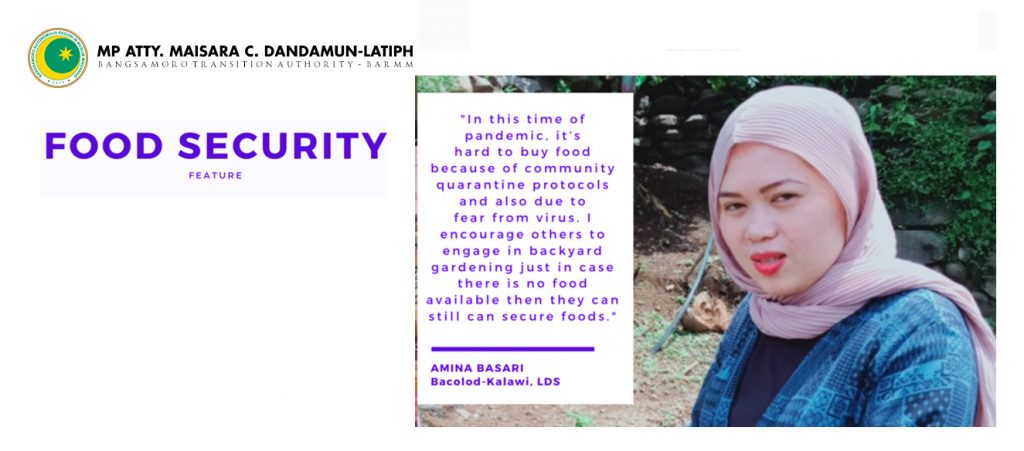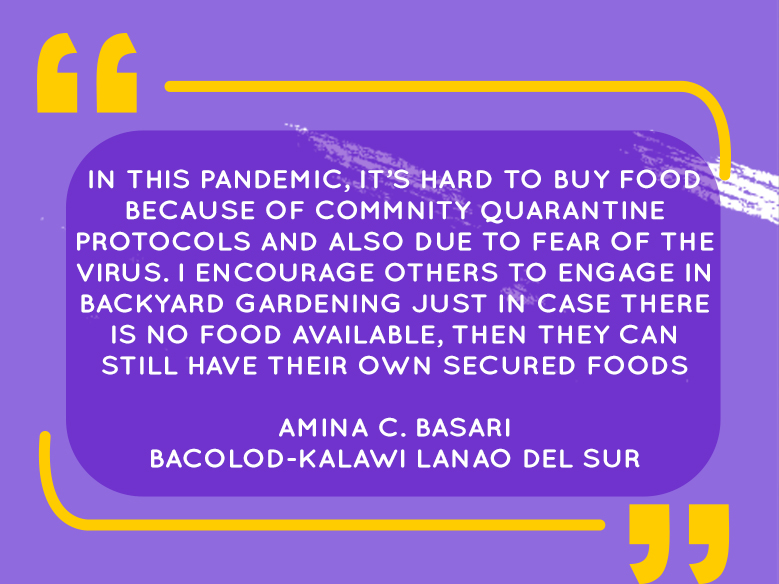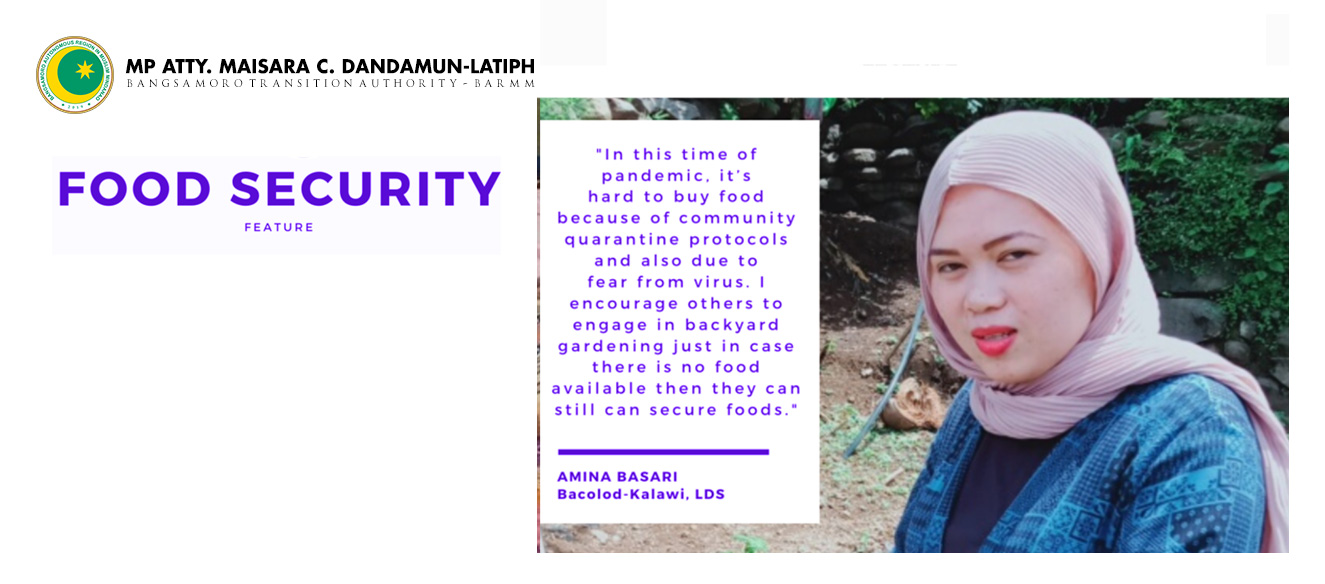

The COVID-19 pandemic affected food systems, posing risks to household food security. It has affected supply and demand. Food supplies were disrupted and productions also became limited due to shortage in labor and restriction of movements.
“Miyapikir ami a phamomolaan kami badn sa mga food crops – lagid a giya mga banggala, kangkong, babasal- para if in case a daden a miyoma a panabang a phoon sa gobyerno na aden a sasanaan ami a khakan ami ibarat, lagid a giya mga banggala.” (We decided to plant food crops – cassava, kangkong, squash – so that, if the government assistance does not reach us, we can rely on our crops for food, like this cassavas), said Amina C. Basari.
“sa giya a kiya-pandemic iyan na kadakelan rkami sa giya Municipality a Bacolod-Kalawi na omaniisa na so aden a lupa iyan a kaphamamolaan iyan na miyamamola mambo.” (Since the pandemic, most of us here at the Municipality of Bacolod-Kalawi who owns a piece of land where we can grow crops started to plant), she added.
The pandemic has created awareness on food security in all levels especially to consumers. It created challenges which directly affected ordinary commerce. Transportation restrictions and quarantine measures are likely to impede farmers’ access to markets, curbing their productive capacities and hindering them from selling their produce.
This results to limited access to food on the part of the consumers. Thus, growing one’s own food in this time of crisis is one of the solutions to beat the effects of COVID-19.
Reference: Sahanee M. Panolong




